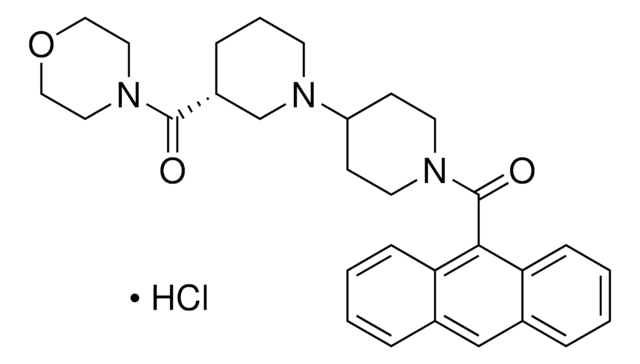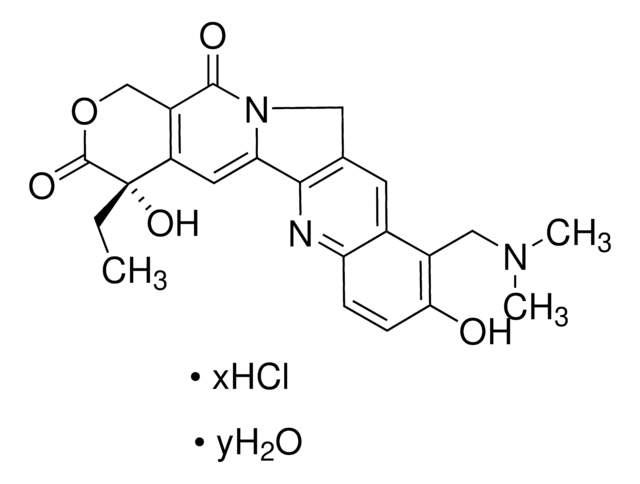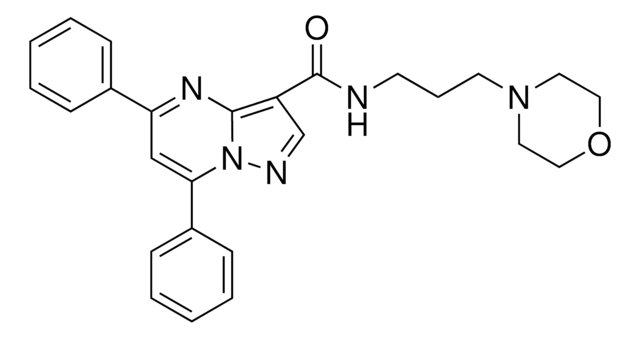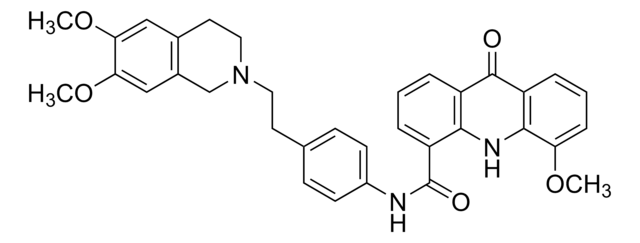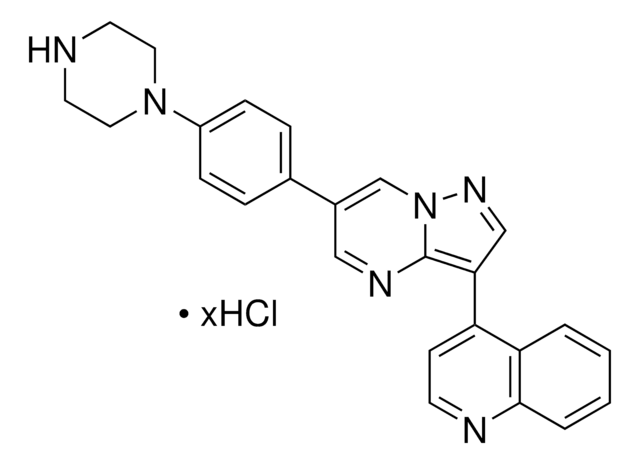Kluczowe dokumenty
SML2179
LDC000067 hydrochloride
≥98% (HPLC)
Synonim(y):
3-((6-(2-Methoxyphenyl)pyrimidin-4-yl)amino)phenyl)methanesulfonamide hydrochloride, 3-[[6-(2-Methoxyphenyl)-4-pyrimidinyl]amino]-benzenemethanesulfonamide, LDC067
About This Item
Polecane produkty
Próba
≥98% (HPLC)
Formularz
powder
warunki przechowywania
protect from light
kolor
white to beige
rozpuszczalność
DMSO: 2 mg/mL, clear (warmed)
temp. przechowywania
−20°C
ciąg SMILES
O=S(CC1=CC(NC2=NC=NC(C3=CC=CC=C3OC)=C2)=CC=C1)(N)=O
InChI
1S/C18H18N4O3S/c1-25-17-8-3-2-7-15(17)16-10-18(21-12-20-16)22-14-6-4-5-13(9-14)11-26(19,23)24/h2-10,12H,11H2,1H3,(H2,19,23,24)(H,20,21,22)
Klucz InChI
GGQCIOOSELPMBB-UHFFFAOYSA-N
Działania biochem./fizjol.
Kod klasy składowania
11 - Combustible Solids
Klasa zagrożenia wodnego (WGK)
WGK 3
Temperatura zapłonu (°F)
Not applicable
Temperatura zapłonu (°C)
Not applicable
Wybierz jedną z najnowszych wersji:
Certyfikaty analizy (CoA)
It looks like we've run into a problem, but you can still download Certificates of Analysis from our Dokumenty section.
Proszę o kontakt, jeśli potrzebna jest pomoc Obsługa Klienta
Masz już ten produkt?
Dokumenty związane z niedawno zakupionymi produktami zostały zamieszczone w Bibliotece dokumentów.
Nasz zespół naukowców ma doświadczenie we wszystkich obszarach badań, w tym w naukach przyrodniczych, materiałoznawstwie, syntezie chemicznej, chromatografii, analityce i wielu innych dziedzinach.
Skontaktuj się z zespołem ds. pomocy technicznej
